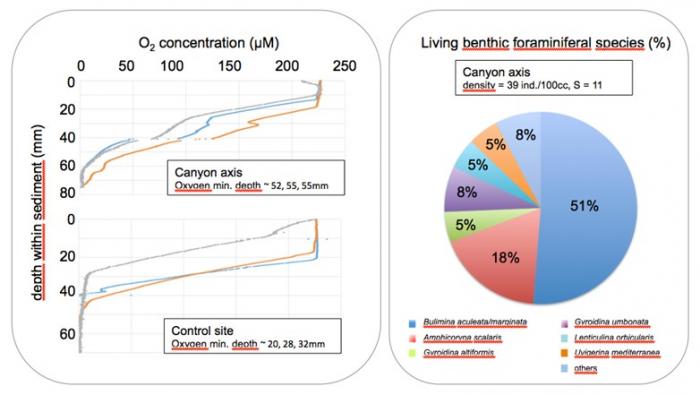Christian GRENZ (MIO)
Laetitia LICARI (CEREGE)
This project focuses on the benthic recovery dynamics in the Cassidaigne canyon offshore Marseille after 50-yrs of offshore red mud disposal. It monitors benthic foraminifera response to physical disturbance.
Three cruises were conducted since October 2017 in Cassidaigne canyon to monitor seasonal dynamics of sediment metabolism and benthic foraminifera at two stations: (1) one control site at 400m water depth in the eastern lobe of the canyon head; (2) one severely red-mud impacted station at ca 700m water depth within the canyon axis. Preliminary results on grain-size analysis, dissolved oxygen profiles within sediment, and fauna are:
- environmental conditions are strongly contrasted at both surveyed stations.
- benthic living (Rose-Bengal stained) foraminiferal fauna from control site exhibits abundance and diversity patterns consistent with upper bathyal environment under oligo-mesotrophic conditions.
- within the canyon axis, standing stocks and diversity are extremely low, and fauna is strongly dominated by buliminid species. Comparison to faunal data published at a nearby location several years before cessation of red-mud disposal suggest that no significant change in recolonization of impacted sediment has occurred so far, although our data might show a slight diversity increase.
Left: vertical profiles (triplicates) of dissolved oxygen within sediment in the canyon axis and at control site.
Right: species compositions of living benthic foraminiferal fauna in the canyon axis (uppermost cm).



